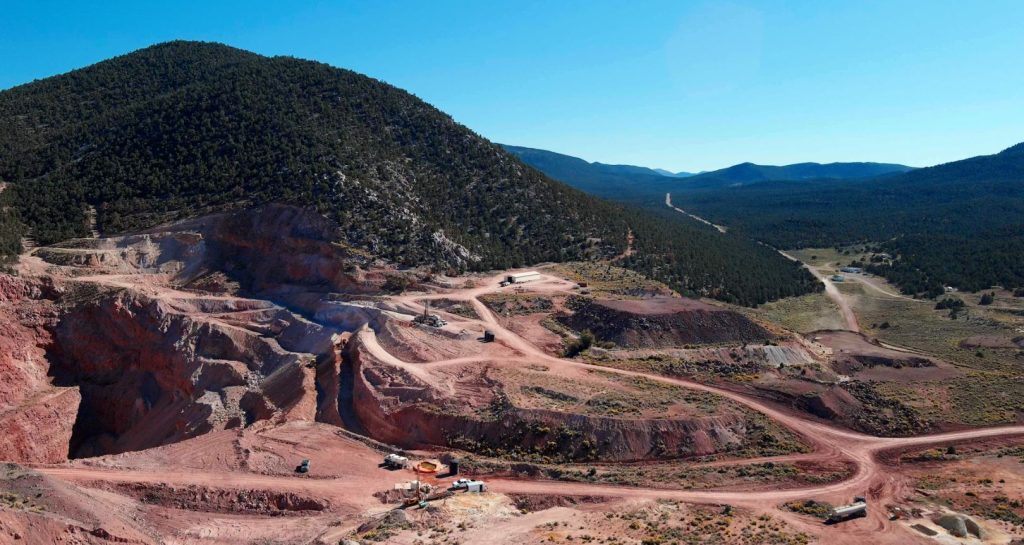Nevada King Gold drills 6.14 g/t gold over 30.7 metres at Atlanta, Nevada

Nevada King Gold Corp. [TSXV-NKG; OTCQX-NKGFF] reported assay results from one metallurgical core hole and two reverse circulation (RC) holes recently completed at its Atlanta gold mine project located 264 km northeast of Las Vegas, Nevada, in the prolific Battle Mountain trend.
Core hole AT23NS-54C intercepted 6.14 g/t gold and 79.3 g/t silver over 30.7 metres, and was sited to collect mineralized silica breccia occurring along the West Atlanta fault (WAF) for the continuing phase 2 metallurgical test work program. The WAF forms the fault boundary between the Atlanta mine fault zone (AMFZ) on the east and the West Atlanta graben zone (WAGZ) on the west.
Angle holes AT24NS-174B (3.08 g/t Au over 48.8 m) and AT24NS-174C (4.15 g/t Au over 35.1 m) were designed to infill a gap in drill coverage along the western side of the AMFZ, and also track the southern extension of the northerly trending high-grade intrusive contact in the hanging wall of the WAF that was intercepted in adjacent holes along lines both north and south of Section 23-7N(4).
These closely spaced angle holes clearly demonstrate a consistent 60-70-degree west dip to this mineralized zone that likely served as the Atlanta deposit’s main hydrothermal flue (or feeder) along the WAF. The zone is between 15 m and 20 m true thickness and is bounded on the east by massive Eureka quartzite. This high-grade, intrusive dominated zone looks to veer northwest and pinch out, but remains open to the south, where it appears to widen and curve southwestward and possibly connect to more high-grade intercepts along Section 22-4N.
Cal Herron, exploration manager of Nevada King, stated: “The Atlanta gold/silver deposit evolved within a complex geological environment replete with long-lived faulting, caldera resurgence, multiple intrusive events and numerous mineralizing events. It is this complexity and interplay of recurring events over a long period of time that can allow for the formation of large gold systems. The company is relogging with a close focus on trace element geochemical patterns to identify protoliths within strongly altered/mineralized zones, which will allow us to further refine our geologic model.
“By focusing on stable trace elements that remain relatively immobile during hydrothermal alteration, we have been able to differentiate protolith types within the silica breccia unit to more accurately identify critical structures and lithotypes responsible for gold mineralization.”
Nevada King is the third largest mineral claim holder in Nevada, behind Nevada Gold Mines (Barrick/Newmont) and Kinross Gold. Starting in 2016, the company has staked large project areas hosting significant historical exploration work along the Battle Mountain trend located close to current or former producing gold mines. These project areas were initially targeted based on their potential for hosting multi-million-ounce gold deposits and were subsequently staked following a detailed geological evaluation.
District-scale projects in Nevada King’s portfolio include the 100%-owned Atlanta Mine, located 100km southeast of Ely, the Lewis and Horse Mountain-Mill Creek projects, both located between Nevada Gold Mines’ Phoenix and Pipeline mines, and the Iron Point project, located 35km east of Winnemucca, Nevada.
The Atlanta mine is a historical gold-silver producer with a NI 43-101-compliant pit-constrained resource of 460,000 ounces Au in the measured and indicated category (11 million tonnes at 1.3 g/t), plus an inferred resource of 142,000 oz Au (5.3 million tonnes at 0.83 g/t).
